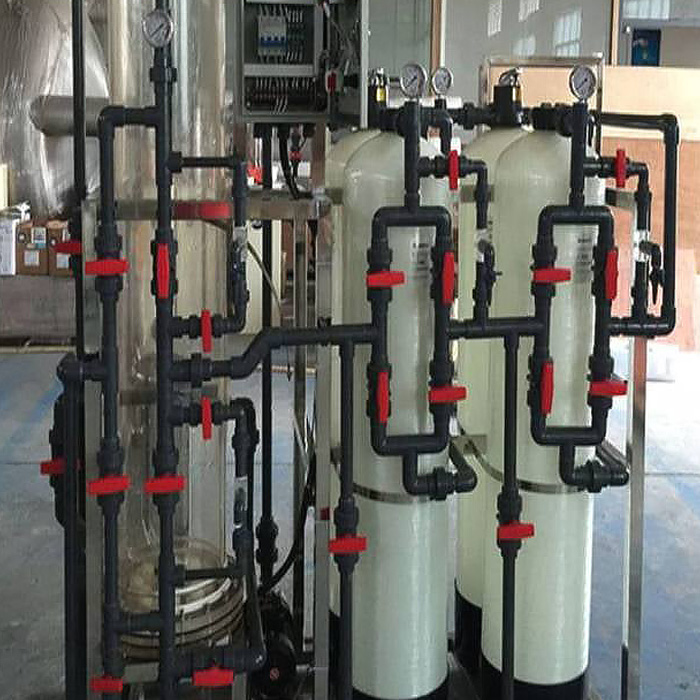
Deionization plants removes electrically charged positive & negative ions from the filtered water. The presence of ions (either positive & negative) in water is due to soluble salts, which may enhance the conductivity of water. Apart from drinking water, presence of salts may not be required for some specialized processes and applications, especially for pharmaceuticals and other industrial use.
Deionized water is made by flowing tap water, spring water, or distilled water through an electrically charged resin. Usually, a mixed ion exchange bed with both positive and negative charged resins is used. Cations and Anions in the water, exchange with H+ and OH– in the resins, producing H2O (water).
Deionized water is commonly used to top up the lead-acid batteries, boiler feed water, laboratories, pharmaceuticals and for other applications.
RO plant Pakistan has expertise for installation of Deionization (DI) plant, to provide zero-TDS water. DI plants at RO Plant Pakistan are rugged, pre-engineered, pre-assembled standardized units that minimize expensive installations and startup costs.
RO Plant Pakistan has designed its Deionization systems to maximize the efficiency and repeatability of the unit during the service and regeneration modes.
Deionization (DI) is a very convenient and cost effective water filtration process for producing highly purified water on demand for aquarium and hydroponic use. Deionization removes total dissolved solids (TDS) from water using ion exchange resins, controlling the electric charge of ions in the water to remove TDS.
The two-bed deionizer consist of two vessels, one containing a Cation-exchange resin in the hydrogen (H+) form and the other containing an anion resin in the hydroxyl (OH-) form. Water flows through the cation column, whereupon all the cations are exchanged for hydrogen ions. To keep the water electrically balanced, for every monovalent cation, e.g. Ca2+, or Mg2+, two hydrogen ions are exchanged. The same principle applies when considering anion-exchange. The decationised water then flows through the anion column. This time, all the negatively charged ions are exchanged for hydroxide ions which then combine with the hydrogen ions to form water (H2O).
In mixed-bed deionizers the cation-exchange and anion-exchange resins are intimately mixed and contained in a single pressure vessel. The thorough mixture of cation-exchangers and anion-exchangers in a single column makes a mixed-bed deionizer equivalent to a lengthy series of two-bed plants. As a result, the water quality obtained from a mixed-bed deionizer is appreciably higher than that produced by a two-bed plant.

RO Plant Pakistan, the company works on water treatment in Pakistan, Through these plants, (reverse osmosis plants) (Flitration plants) (ultra Filtration plants) (Water Shop Plants) (softner plants) (deionizer plants).
Copyrights © 2024 RO Plant Pakistan, All Rights Reserved.
WhatsApp us